Poznamka: Vitajte! Prepac, ze vsetko tu je len po anglicky ale 1) moja slovencina je bohuzial slaba a 2) mnohe z mojich citatelov nehovoria po slovensky. Prepac. Mam, vsak, “google translate buttons” na pravej strane (bohuzial grafy a tabulky su len po anglicky. Ak chcete preklad, daj vediet: pozorblog@gmail.com alebo nechaj “comment”).
Poznamka II: HN uz publikoval slovensky preklad (neviem kto to robil, ale dakujem): http://hnonline.sk/slovensko/c1-43853830-kovac-junior-sa-uniesol-sam-volim-hzds
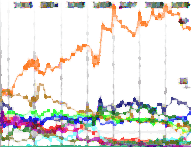 In recent years thanks to interactive web technologies, a variety of news outlets, civic groups and party organizations have begun to create online tests to help voters figure out the relationship between what they want and the party that most closely fits their ideological preferences (for example http://www.quizrocket.com/who-should-i-vote in the US, http://www.selectsmart.com/FREE/select.php?client=GLAR in the UK, and most recently and impressively, http://www.euprofiler.eu/). This trend has finally made it to Slovakia in the form of “Voličomer“, Pravda’s voting test which asks “How will people with similar opinions to yours vote? The same, similar or completely different? Fill out this questionnaire and you will find out right away.”
In recent years thanks to interactive web technologies, a variety of news outlets, civic groups and party organizations have begun to create online tests to help voters figure out the relationship between what they want and the party that most closely fits their ideological preferences (for example http://www.quizrocket.com/who-should-i-vote in the US, http://www.selectsmart.com/FREE/select.php?client=GLAR in the UK, and most recently and impressively, http://www.euprofiler.eu/). This trend has finally made it to Slovakia in the form of “Voličomer“, Pravda’s voting test which asks “How will people with similar opinions to yours vote? The same, similar or completely different? Fill out this questionnaire and you will find out right away.”

What I found out right away is that Voličomer leaves rather a lot to be desired:
-
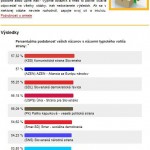 The first time that I filled out the survey, I tried to exhibit the profile of a European social democrat, the party family closest to my own: moderately statist on economic questions and liberal on cultural questions. What came up first on the list, however was the Communist Party followed by the tiny HZDS-splinter AZEN, though with with a variety of other left wing parties nearby including Smer. I was willing to accept this result as reflective of the absence of cultural liberalism from most left wing parties in Slovakia (though I have a hard time believing that the KSS is the closest alternative).
The first time that I filled out the survey, I tried to exhibit the profile of a European social democrat, the party family closest to my own: moderately statist on economic questions and liberal on cultural questions. What came up first on the list, however was the Communist Party followed by the tiny HZDS-splinter AZEN, though with with a variety of other left wing parties nearby including Smer. I was willing to accept this result as reflective of the absence of cultural liberalism from most left wing parties in Slovakia (though I have a hard time believing that the KSS is the closest alternative). 
- I then tried to fill out the survey as a supporter of Slovakia’s opposition. Here the results were rather good, with SaS coming first and SDKU coming second on the list, though oddly with AZEN again appearing near the top of the list.
- My next effort was to to represent a member of one of the Slovak national parties, with criticism of both Hungarians and Roma and mixed answers on economic questions that are less important for such voters. The result was below. As with my social democratic effort, an extreme party popped up first–the radically xenophobic NS–followed by Meciar’s HZDS and the Slovak National Party. But in between HZDS and SNS appeared the Party of the Hungarian Coalition, MKP-SMK! It is virtually impossible for me to think of any meaningful quiz in which these parties appear next to one another except on in which the adjectives “Slovak” and “Hungarian” are erased and respondents are simply asked about the intensity of their national feeling (which would be an interesting exercise but it is not what Pravda is trying to do with Volicomer).
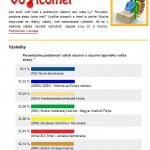
- A second attempt to represent a supporter of a Hungarian party produced an equally odd pattern that included, in the top five, two HZDS splinter parties (ND and AZEN), the Christian Democrats (KDH), the Party of the Hungarian Coalition (MKP-SMK)–but not until third place–followed in short order by an obscure worker’s party (ZRS), Smer, the Roma party and the radically anti-Roma NS.
The problem here is that Volicomer does not seem to be set up in a way that could produce a meaningful answer except in certain circumstances or by accident. Setting aside the fact that like almost all such tests Volicomer is based only on policy questions and not on relevant circumstances such as who respondents voted for in the past or their affection for individual politicians, its failure to identify party preference has more a fundamental cause in its failure to deal with the linked questions of underlying issue dimensions and their salience.
Issue Dimensions
Voters’ answers to political questions tend to form a limited number of reasonably well-defined clusters, (in which case an individual’s answers each of the questions is, theoretically, fairly closely related to the answers o the others). The content of these clusters varies from country to country and from one decade to the next, though most countries have long-lasting oppositions between pro-market and pro-state clusters on economic questions and many have similar clusters on cultural and religious questions, questions of foreign policy, regional and language policy and other sets of issues (for far too much detail on this question, see http://www.la.wayne.edu/polisci/kdk/papers/cleavage.pdf). In some countries all the major political questions are more or less reducible to a single cluster, so that we can speak of one-dimensional political competition. In most, however, knowing voters’ or a parties’ position on one did not help guess positions on the others, producing two or three relatively independent dimensions. (One of the core messages in my own courses on American politics is that despite our obsession with the all-out war between “liberal” and “conservative,” there are at least two dimensions in American politics: one economic and the other cultural. For far to much detail on that question see http://www.pozorblog.com/2010/03/american-politics-in-a-nutshell/).
In Slovakia, I have argued, competition is at least two-dimensional. With an economic dimension and a national dimension. These have sometimes overlapped considerably but at other times have been almost completely unrelated, producing a two dimensional axis such as this graph that I’ve used in other settings:
 This gets a bit complicated, of course, because “nation integrating” means, “Slovak nation defending” and its rival pole is not so much “Slovak nation integrating” as “Hungarian nation defending” but I simplify it here because the main area in which Hungarian parties and Slovak parties agree on this side of the axis is the need to integrate Slovakia into European structures. Regardless of their labels, the important question is the degree to which these axes are independent of one another or somehow aligned so that positions on one are closely related to positions on the other. This is an open question in changing circumstances.
This gets a bit complicated, of course, because “nation integrating” means, “Slovak nation defending” and its rival pole is not so much “Slovak nation integrating” as “Hungarian nation defending” but I simplify it here because the main area in which Hungarian parties and Slovak parties agree on this side of the axis is the need to integrate Slovakia into European structures. Regardless of their labels, the important question is the degree to which these axes are independent of one another or somehow aligned so that positions on one are closely related to positions on the other. This is an open question in changing circumstances.
I have some thoughts that in fact political competition in Slovakia is not defined by two dimensional but actually contains at least two additional “half” dimensions.
 One of these is cultural, not in the national sense but in the religious sense and relates to issues of church and state and traditional morals. The dimension seems to be at right angles to both of the others, forcing the inclusion of a third dimension on the graph, but unlike the others two dimensions, the distribution of people and parties on this dimension is quite asymmetric, with a relatively small share on the side of the church and traditional moral and the bulk of the population and the party system on the other side.
One of these is cultural, not in the national sense but in the religious sense and relates to issues of church and state and traditional morals. The dimension seems to be at right angles to both of the others, forcing the inclusion of a third dimension on the graph, but unlike the others two dimensions, the distribution of people and parties on this dimension is quite asymmetric, with a relatively small share on the side of the church and traditional moral and the bulk of the population and the party system on the other side.

A second half-dimension, more speculative, is one that Tim Haughton and I have identified in Slovakia and other countries in central and eastern Europe: a “novelty” dimension. We have argued that there is a relatively stable (if not dominant) bloc of voters who seek less corrupt governance and who seek new, untainted parties to achieve the goal, but who are invariably disappointed when those parties themselves become corrupt. Thus although the dimension remains stable, the players on the “New and ‘clean'” pole are constantly changing. Parties such as ZRS (1994), SOP (1998), ANO and Smer (2002), SF (2006) and today’s SaS and Most-Hid have at their peak occupied the “new and ‘clean'” end of this axis but slip gradually to the other end and, with the notable exception of Smer, which found other issues on which to build its base, disappear from political competition.
Which brings us back to the Volicomer question. It is virtually impossible to understand the role of programmatic issues for party choice without a clear understanding of how those issues cluster together, how many clusters there actually are and how they are related to one another. Except in certain circumstances, a simple additive list will ultimately produce gibberish (as Volicomer does on anything other than the economic dimension where the plurality of its questions are concentrated), while the best political quizzes begin with the question of dimensionality (see Idealog, http://www.idealog.org/, and Political Compass, http://www.politicalcompass.org/).
Salience
Even a quiz designed to account for Slovakia’s two-and-two-halves dimensions of competition will not produce particularly meaningful results unless it also accounts for the salience of the issue clusters. All parties and voters emphasis that parties and voters place on them clusters when making their political decisions and these are not the same form party to party or from voter to voter. In Slovakia in particular, those who tend to care about national questions put relatively little emphasis on other clusters of issues while those interested in economics usually put national questions in the background. Knowing a person’s positions on issue dimensions, therefore, is important only if you know which of the dimensions is most important for that person. By asking a high number of economic questions, Volicomer privileges the economic dimension and therefore produces acceptable, if not particularly useful results on that dimension while failing to produce anything meaningful on issues that are restricted to one or two questions.
Volicomer2: A (not so) Facetious Alternative
But things like Volicomer are hard to do, you might argue, and I should accept it as better than nothing unless I am willing to do the work to provide a better option. Challenge accepted. In the spirit of the old television game show “Name that Tune” (which I have never actually seen but which was part of the pop culture of my upbringing), “I can name that party in 4 notes.” The flowchart below is a not-so-serious (but not entirely frivolous) attempt to integrate issue dimensions and salience to reduce the number of questions necessary for picking the major parties (and for the smaller parties the choice is largely random in any case):

Even a cursory look at the flowchart reveals the assumptions that I use when approaching Slovakia’s politics:
- The “National Question” is the most polarizing and those who care about national issues are unlikely to care about much else.
- The “National Question” is largely distinct from the economic questions, though those who care a little bit about national questions are more likely to prefer a statist economic policy (hence the “a bit” option that points to the choice between Smer and HZDS. This was not always the case but the two axes have slowly come into closer alignment).
- The choice between MKP-SMK is largely a personality driven one and therefore largely unpredictable on other bases.
- The choice between SDKU, KDH, and SaS is one based on religiosity in the first case and novelty/”cleanliness” on the other. In other words the two half-dimensions currently function primarily within the right wing of the political spectrum. My guess is that by the next elections there will also be a “new party” alternative within the left wing that will siphon some votes from Smer, but we will have to wait to see about that.
I’m not convinced I’m right about any of this, so I’d encourage everybody who reads this to try Volicomer, try the quiz above and see which works better. On this, as with everything, I’d love to see a larger number of reader comments!
 Today’s Czech election (and tomorrow’s Eurovision song contest) are the big news (except that Slovakia and the Czech Republic failed to make it into the final yet again) but there’s actually no actual news just yet, so there’s time for a brief comment on reports of today’s Polis poll in Slovakia. I still wonder about the viability of telephone polls like that of Polis, but to the extent that the firm did fairly well last time in its prediction and tends to follow the same trends as all of the other pollsters (except Median), I am willing to give it a certain amount of credit and build it into my averages. Polis just released a poll conducted between May 15 and May 20 with a fairly large sample. Here’s what we see:
Today’s Czech election (and tomorrow’s Eurovision song contest) are the big news (except that Slovakia and the Czech Republic failed to make it into the final yet again) but there’s actually no actual news just yet, so there’s time for a brief comment on reports of today’s Polis poll in Slovakia. I still wonder about the viability of telephone polls like that of Polis, but to the extent that the firm did fairly well last time in its prediction and tends to follow the same trends as all of the other pollsters (except Median), I am willing to give it a certain amount of credit and build it into my averages. Polis just released a poll conducted between May 15 and May 20 with a fairly large sample. Here’s what we see: Polis’s 34% for Smer is the lowest score the party has received in any major poll in the last two years, but Polis tends to under-poll for Smer, at least compared to the others. The patterns, however, are extremely consistent: Polis, MVK and FOCUS all show nearly identical seven point drops for FOCUS since January and all, including Median, show approximately ten point drops since a year ago. Why this should be is open to question: the emergence of SaS (I accidentally wrote VV; Freudian slip) and perhaps a few points to the new SDL and perhaps some last minute hesitation by Smer’s many soft supporters who, as election nears, are now forced actually to consider their vote. It is important to remember that in the 2006 election Smer actually outperformed final polls, but these are never a good indicator (or more precisely they are sometimes a good indicator but it is difficult to predict when).
Polis’s 34% for Smer is the lowest score the party has received in any major poll in the last two years, but Polis tends to under-poll for Smer, at least compared to the others. The patterns, however, are extremely consistent: Polis, MVK and FOCUS all show nearly identical seven point drops for FOCUS since January and all, including Median, show approximately ten point drops since a year ago. Why this should be is open to question: the emergence of SaS (I accidentally wrote VV; Freudian slip) and perhaps a few points to the new SDL and perhaps some last minute hesitation by Smer’s many soft supporters who, as election nears, are now forced actually to consider their vote. It is important to remember that in the 2006 election Smer actually outperformed final polls, but these are never a good indicator (or more precisely they are sometimes a good indicator but it is difficult to predict when). Polis also tends to underpoll for SNS–by quite a significant margin–but its trends tend to follow, and it is interesting that after a rise in April in both FOCUS and Polis (large in FOCUS, small in Polis) SNS is in both polls back to levels below its March result, suggesting that the Fidesz boost was short lived. Of course since the Polis and FOCUS polls were taken, we have a new, and perhaps more significant dual-citizenship question which may help SNS, but Smer is also hitting this hard and may pick up much of that reservoir.
Polis also tends to underpoll for SNS–by quite a significant margin–but its trends tend to follow, and it is interesting that after a rise in April in both FOCUS and Polis (large in FOCUS, small in Polis) SNS is in both polls back to levels below its March result, suggesting that the Fidesz boost was short lived. Of course since the Polis and FOCUS polls were taken, we have a new, and perhaps more significant dual-citizenship question which may help SNS, but Smer is also hitting this hard and may pick up much of that reservoir. Polis also underpolls HZDS–interesting that it underpolls all three coalition parties, and strong reason never to consider its numbers alone, especially for predicting government composotion–but as with the other parties, Polis numbers do follow basic trends and here they show the same slow slide as all of the others except Median (about which I have commented frequently elsewhere). There’s not much to see here, but Slovakia’s next goverment may depend on whether its shrinking voting base turns out to vote more than others’.
Polis also underpolls HZDS–interesting that it underpolls all three coalition parties, and strong reason never to consider its numbers alone, especially for predicting government composotion–but as with the other parties, Polis numbers do follow basic trends and here they show the same slow slide as all of the others except Median (about which I have commented frequently elsewhere). There’s not much to see here, but Slovakia’s next goverment may depend on whether its shrinking voting base turns out to vote more than others’.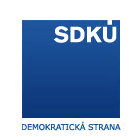 Even discounting SDKU’s jump in recent Median polls, both FOCUS and Polis show increases for Polis in April-May, though Polis’s is much larger and to levels not normally seen for this party. I have some doubts about the magnitude, but (like Smer above) SDKU also tends to perform better than polls in the final election (though this time they have SaS to contend with)
Even discounting SDKU’s jump in recent Median polls, both FOCUS and Polis show increases for Polis in April-May, though Polis’s is much larger and to levels not normally seen for this party. I have some doubts about the magnitude, but (like Smer above) SDKU also tends to perform better than polls in the final election (though this time they have SaS to contend with)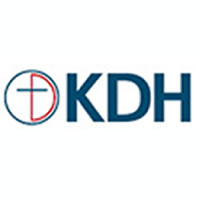 Every single poll shows KDH dropping from a March peak to a lower (but still relatively high) level in May. The question is not the trend but the magnitude. Polis, MVK (and Median) show the party between 11 and 12. FOCUS, by contrast, shows it between 8 and 9. No data that I have tells me which side of this range the party’s scores actually fall.
Every single poll shows KDH dropping from a March peak to a lower (but still relatively high) level in May. The question is not the trend but the magnitude. Polis, MVK (and Median) show the party between 11 and 12. FOCUS, by contrast, shows it between 8 and 9. No data that I have tells me which side of this range the party’s scores actually fall. SaS follows the same trend in every poll: continued rise in May. Polis’ jump here is slightly smaller than that of FOCUS (which shows a correspondingly smaller jump for SDKU, so the difference may lie in different measures of supporters of those two parties, or it may not). The party continues to rise and is not facing the sort of “switcher’s remorse” that we saw for SOP in 1998, for ANO, Smer and HZD in 2002 and for SF in 2006. At least not yet.
SaS follows the same trend in every poll: continued rise in May. Polis’ jump here is slightly smaller than that of FOCUS (which shows a correspondingly smaller jump for SDKU, so the difference may lie in different measures of supporters of those two parties, or it may not). The party continues to rise and is not facing the sort of “switcher’s remorse” that we saw for SOP in 1998, for ANO, Smer and HZD in 2002 and for SF in 2006. At least not yet.
 Amazingly both Hungarian parties cross the threshold in this poll even though the total Hungarian electorate as measured by this poll is only 10.4. The actual electorate is probably somewhat larger, so this is good news for Hungarians in Slovakia. It is amazing that these two parties continue in their head-t0-head duel which maximizes both the potential gain–if both do well–and the potential risk–if one drops only slightly below the threshold. I frankly never expected the parties to maintain this kind of parity, and whether they can keep it up is the thing that most intrigues me about the upcoming election results.
Amazingly both Hungarian parties cross the threshold in this poll even though the total Hungarian electorate as measured by this poll is only 10.4. The actual electorate is probably somewhat larger, so this is good news for Hungarians in Slovakia. It is amazing that these two parties continue in their head-t0-head duel which maximizes both the potential gain–if both do well–and the potential risk–if one drops only slightly below the threshold. I frankly never expected the parties to maintain this kind of parity, and whether they can keep it up is the thing that most intrigues me about the upcoming election results.
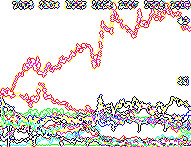
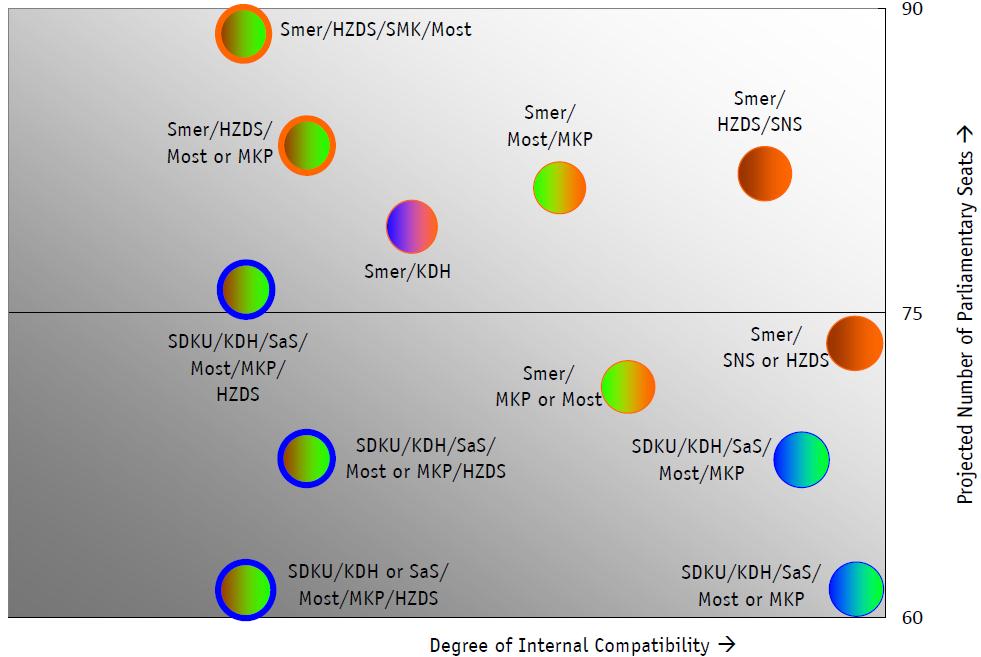
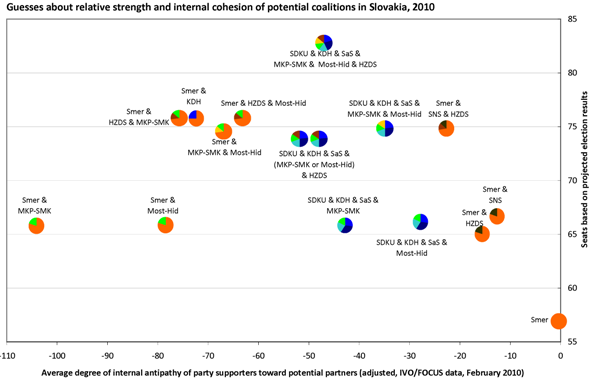
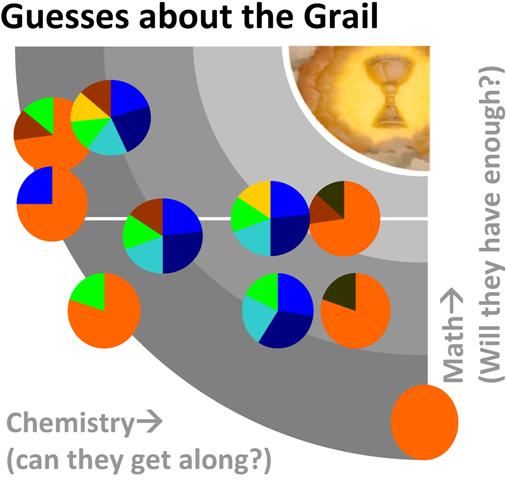
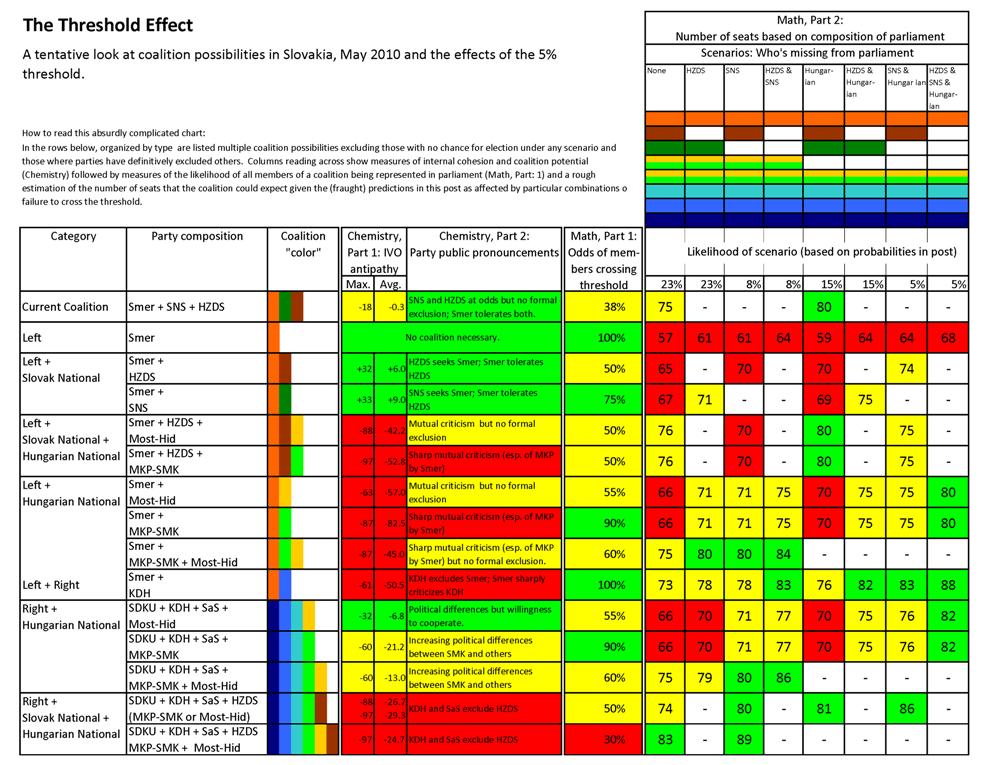

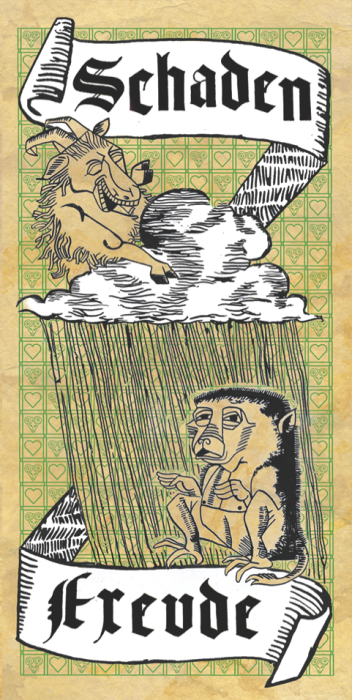
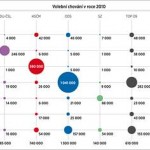
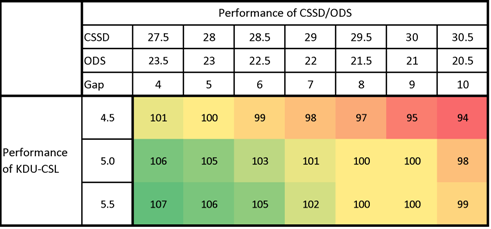
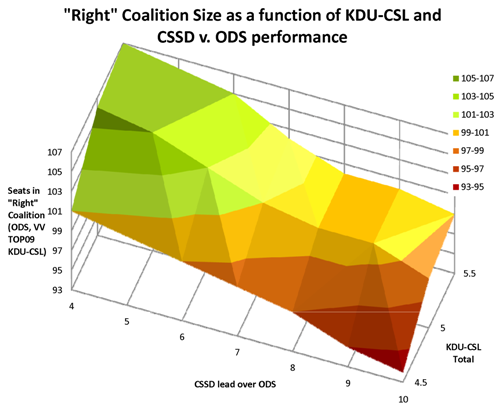
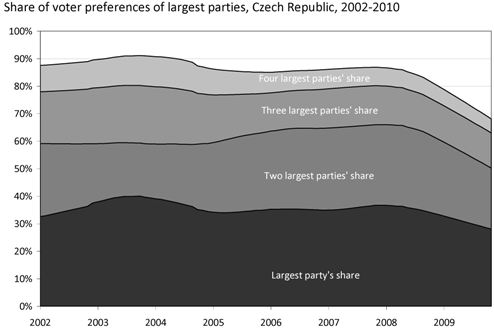
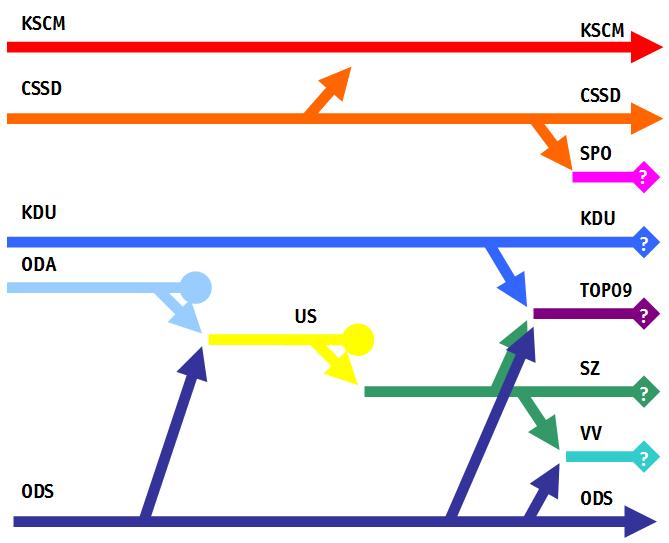
 Thanks to Michaela Stankova of the
Thanks to Michaela Stankova of the 
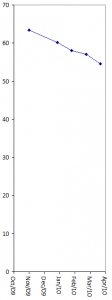

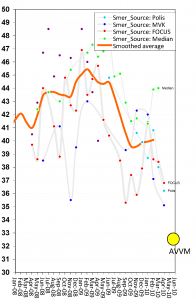
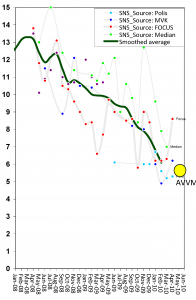
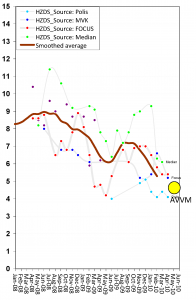
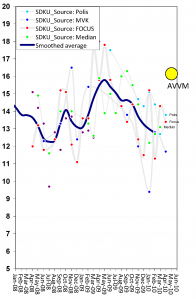
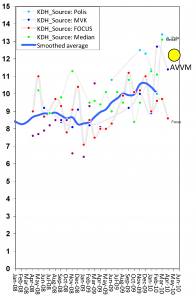
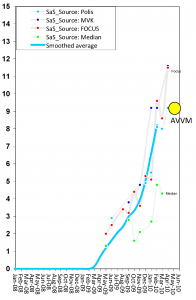
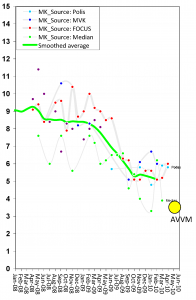
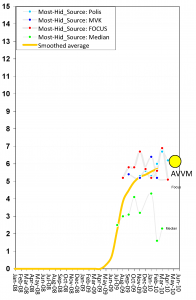




 This gets a bit complicated, of course, because “nation integrating” means, “Slovak nation defending” and its rival pole is not so much “Slovak nation integrating” as “Hungarian nation defending” but I simplify it here because the main area in which Hungarian parties and Slovak parties agree on this side of the axis is the need to integrate Slovakia into European structures. Regardless of their labels, the important question is the degree to which these axes are independent of one another or somehow aligned so that positions on one are closely related to positions on the other. This is an open question in changing circumstances.
This gets a bit complicated, of course, because “nation integrating” means, “Slovak nation defending” and its rival pole is not so much “Slovak nation integrating” as “Hungarian nation defending” but I simplify it here because the main area in which Hungarian parties and Slovak parties agree on this side of the axis is the need to integrate Slovakia into European structures. Regardless of their labels, the important question is the degree to which these axes are independent of one another or somehow aligned so that positions on one are closely related to positions on the other. This is an open question in changing circumstances.

